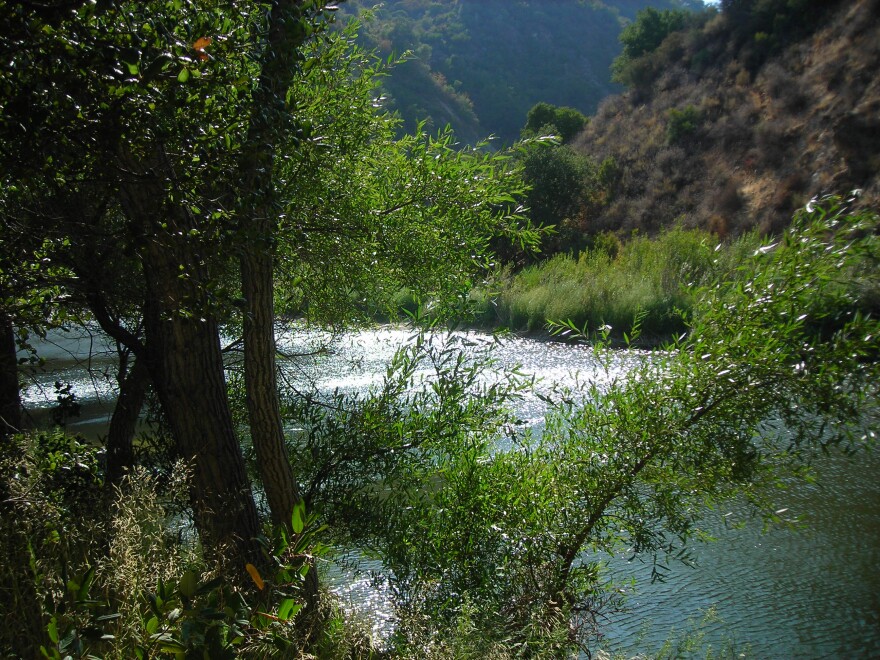With our free press under threat and federal funding for public media gone, your support matters more than ever. Help keep the LAist newsroom strong, become a monthly member or increase your support today.
NASA Begins Mapping California To Understand Climate Change's Toll On Plant Life

Researchers are mapping the geography and plant growth in two Santa Barbara nature preserves this spring to learn more about the effects of climate change.
Kimberley Miner, a Jet Propulsion Laboratory scientist at NASA, is leading the field campaign and says the locations are emblematic of what the whole state is experiencing.
“I know we're all really concerned about drought. We're all really concerned about the increase in wildfires," Miner said. "All of the information that we're getting about the local plants will give us an understanding of what is going on right now. What's happened in the recent past and what we could potentially expect in the near future.”
The program, titled SHIFT, or Surface Biology and Geology High-Frequency Time Series, is a collaborative effort led by NASA’s Jet Propulsion Laboratory, The Nature Conservancy and the University of California, Santa Barbara.
The campaign will track the health of plant species to oversee how California’s vulnerable plant life is surviving amid a drier climate. The state is already in its third year of a prolonged drought, with a record dry spell earlier this year due to lack of precipitation.
This information collected will also be critical for creating strategies to conserve and protect the ecosystem from the threats of climate change and biodiversity loss.
“This is what it’s about for us: to understand the change that’s happening, anticipate the change to come, and to influence the trajectory of conservation, now and for future generations,” said Mark Reynolds, a SHIFT co-investigator and director of the Point Conception Institute at The Nature Conservancy’s Jack and Laura Dangermond Preserve.
The process will be a combination of airborne scientific instruments recording imagery along with scientists collecting data on the ground. The Earth System Observatory, which was established in 2021, will give scientists the most up-to-date images of the effects of climate change on a planetary scale.
The upcoming @NASA Earth System Observatory will complement current satellites, working in tandem to create a 3D, holistic view of Earth, from bedrock to atmosphere. #EarthDay
— NASA Earth (@NASAEarth) April 22, 2022
Learn more: https://t.co/HsRqEyxd6N pic.twitter.com/7S6cibFj9q
The data gathered over the 640-square-mile area— from Los Padres National Forest in the east to the ocean in the west— will help focus the work of a global satellite system launching in 2028.
At LAist, we believe in journalism without censorship and the right of a free press to speak truth to those in power. Our hard-hitting watchdog reporting on local government, climate, and the ongoing housing and homelessness crisis is trustworthy, independent and freely accessible to everyone thanks to the support of readers like you.
But the game has changed: Congress voted to eliminate funding for public media across the country. Here at LAist that means a loss of $1.7 million in our budget every year. We want to assure you that despite growing threats to free press and free speech, LAist will remain a voice you know and trust. Speaking frankly, the amount of reader support we receive will help determine how strong of a newsroom we are going forward to cover the important news in our community.
We’re asking you to stand up for independent reporting that will not be silenced. With more individuals like you supporting this public service, we can continue to provide essential coverage for Southern Californians that you can’t find anywhere else. Become a monthly member today to help sustain this mission.
Thank you for your generous support and belief in the value of independent news.

-
What do stairs have to do with California’s housing crisis? More than you might think, says this Culver City councilmember.
-
Yes, it's controversial, but let me explain.
-
Doctors say administrator directives allow immigration agents to interfere in medical decisions and compromise medical care.
-
The Palisades Fire erupted on Jan. 7 and went on to kill 12 people and destroy more than 6,800 homes and buildings.
-
People moving to Los Angeles are regularly baffled by the region’s refrigerator-less apartments. They’ll soon be a thing of the past.
-
Experts say students shouldn't readily forgo federal aid. But a California-only program may be a good alternative in some cases.







